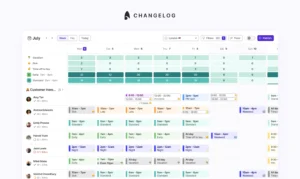
Providing excellent service in eCommerce – Webinar

Joined by Mor Cohen, Head of Global Support at Dixa and Rose Goodbody, Decorator Success Manager at Lick, we discussed how customer service teams can navigate the unique challenges of eCommerce support. In this session, we cover response times, managing peak seasons and which metrics you need to be aware of.
The demand for speediness
In a world where consumers have more choice than ever and instant is the norm, customer support teams are under more pressure than ever to be both available and accommodating to consumer demand. Mor highlights the demand for speediness at all times of the day (and night), which can be met by providing multiple contact options, of which response times will likely vary. If, for example, you provide customers with the option to join a live chat, a member of your team will need to be available to reply to that chat there and then. If, however, customers reach out via email a slower response time is likely to be accepted – although many companies are still looking to meet a 24 hour turnaround.
Categorising tickets
At Lick, Rose shares how categories for interactions help the team to prioritise requests. Customers facing an immediate problem are higher in the queue than those that have a more general enquiry, for example. Using software that bases ranking off of historic enquiry data, the Lick team have an idea of acceptable response times for varying enquiries – a system that helps keep customer satisfaction high.
Looking beyond response time
While important, excellent service is far more than response time alone. Both Mor and Rose stress the importance of managing peak seasons, understanding resolution time alongside initial response and utilising tools and products that help to increase your team efficiency.
Managing peak seasons in eCommerce support
- Get your house in order. In the lead up to your peak season, spend time digitally organising your resources, FAQ’s, auto-replies and other help articles. Create new content based on what questions your support team fielded the previous year during this time. And with any content updates, make sure to amend the publishing year.
- Hire in advance. If additional resources is what you need to navigate a peak, make sure you hire well in advance to allow adequate time for training and onboarding. Fewer well-trained agents will serve you better than more poorly-trained agents.
- Manage team expectations and concerns. While you might not be able to reduce demand in peak season, you can help your team to navigate the increase well. Neglecting the agent experience will only negatively impact customer experience too. Letting your team know you’re on their side and checking-in during busy periods can go a long way.
Measuring success: The metrics you need to be aware of
- CSAT (customer satisfaction) ranked highly for both Mor and Rose – unsurprisingly. Both agree that an overall understanding of how happy customers are is the most important stat for consideration.
- Response time AND full resolution time. While response time is often highlighted, Rose also stressed the importance of looking at the time to reach a full resolution. Replying to a customer in 5 minutes at first contact means little if it then takes three days to solve their issue. Accounting for the whole picture allows you to identify where customers may be being let down.
- How many tickets are completed. While not always crucial – some tickets can take longer to close than others, for example – an overview of what your team is doing is important for continued optimisation and identifying opportunities.



